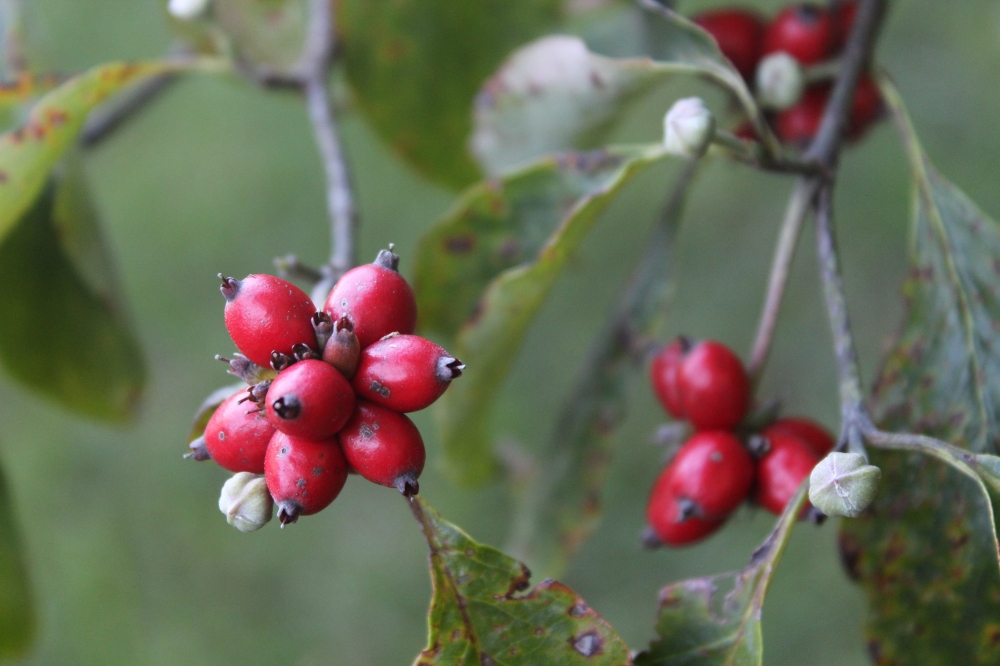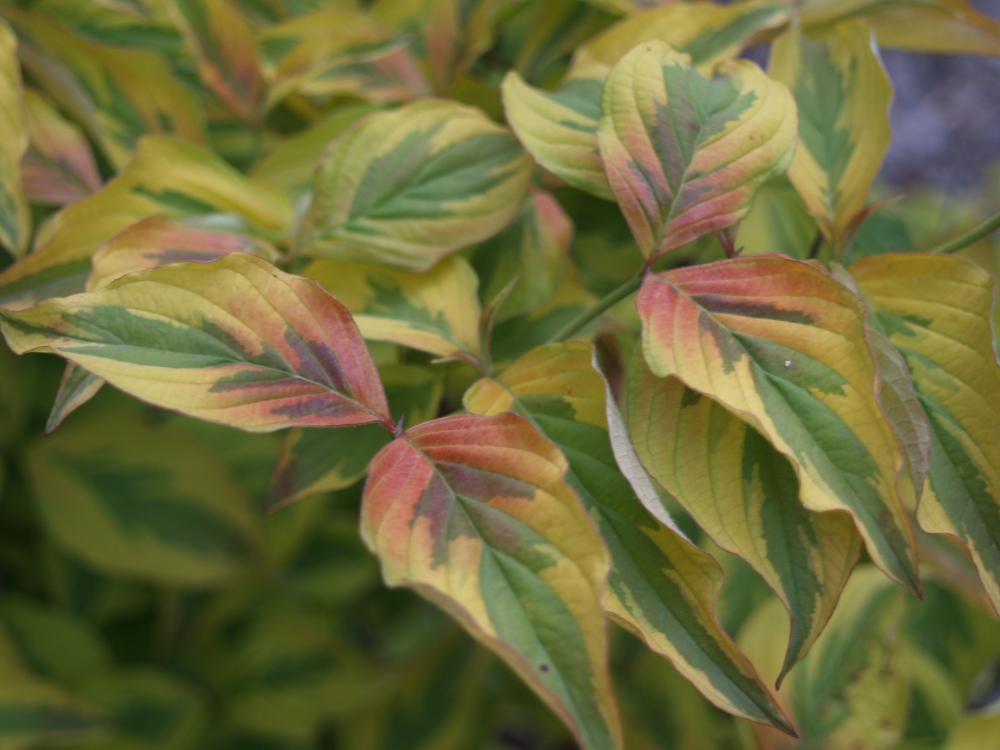I’m thinking that berries on the dogwood (Cornus florida) in the front garden are more abundant than usual, though I am unreliable on matters of recollection, and perhaps this is nothing out of the ordinary. In any case, I will presume that I am correct, reasoning that bees were particularly active in pollinating in the extraordinarily warm early spring.
Though they are fully red, berries must not yet be fully ripened since birds have not stripped them bare. That will happen soon, most likely just as leaves begin to turn red, which is late in coming in this early autumn that has been unusually warm until the last week. There is hardly a more pitiful leaf than the dogwood’s in late summer, and thankfully it is one of the first to turn to its autumn color.

The Chinese dogwood (Cornus kousa, above) had a heavy crop of fruit a month ago, and as they began to ripen I thought that I must wait another two days to photograph the strawberry sized fruits until they were perfectly red. I don’t recall the cause of the delay, but three days after there was not a single fruit to be found. Occasionally, I will find fruits have ripened and fallen to the ground, but this year the fruits were harvested the moment they were ripe.

A year ago several fruits were seen on the variegated ‘Samaritan’ dogwood, which is shaded more than the Chinese dogwoods prefer. While its foliage is splendid, it flowers sparsely, which of course results in few fruits. Hybrid dogwoods ‘Stellar Pink’ (below) and ‘Venus’ flower profusely beginning the last week of April, but rarely do I see fruits.

The variegated dogwood ‘Cherokee Sunset’ (below) has not flowered in recent years, so it has no berries. The lack of flowers is somewhat a mystery, among many that I am certain never to figure. In recent years (decades?) the foliage of ‘Cherokee Sunset’ has been plagued by powdery mildew in summer, as all the native dogwoods in the garden are, but to a greater degree so that it appears particularly haggard by mid summer. This summer, despite heat and humidity, there has been less mildew on all the dogwoods, including ‘Sunset’. Still, no flower buds are evident.
I would declare that a weeping dogwood that overhangs a small pond off the rear deck was a waste of space, except it hardly takes any. A leatherleaf mahonia (Mahonia bealei) has spread so that the dogwood’s spindly trunk grows up through the shrub’s mass. I look every spring, and suppose that I once saw a flower, but almost certainly that is wishful thinking. Nothing about the dogwood’s positioning, too much or too little shade, should prevent its flowering except that it is prominent from the kitchen window where its flowering would be especially appreciated in mid April. The gardener’s best ideas often do not come to fruition.
those variegated dogwoods are outstanding
I favor variegated plants of all sorts, with several variegated dogwoods in the garden.
Your comments made me go check my stellar pink dogwood. Have a good number of berries. Thanks for the prompt!
Our dogwood (planted by your crews about 6 years ago) has very few berries forming, which is usual as it gets very little sun. Our 2-year-old Winterberry is beginning to form its first berries after we decided to get it a mate, a “Southern Gentleman.” It’s in partial shade. Our wild Nandinas, however, are loaded and drooping with green berries now. They are in partial sun, and this looks like it will be their most bountiful year ever, in terms of berries. Most of them are are at least 10 years old. Here’s hoping we don’t get an icy, snowy winter here in NoVA that breaks and droops everything.
Again, there are few berries on the Winterberry hollies. I suspect that the male was lost years ago when bamboo invaded the clump of hollies. The bamboo was removed, but not before a holly or two were lost. I have planned to add Southern Gentleman, or another male, but as many things go, I haven’t gotten around to it so I shouldn’t complain.
So,… My dogwood (cornus Florida) is not the.only one that regularly gets powdery mildew late in the summer. A few years ago it came in the spring, but wasn very ‘powdery’ until autumn.
Ray
For whatever reason, none of the dogwoods had much powdery mildew this year. The one in the photo suffers annually with leaf spotting, this year as much as any, but less disfiguring mildew this year.